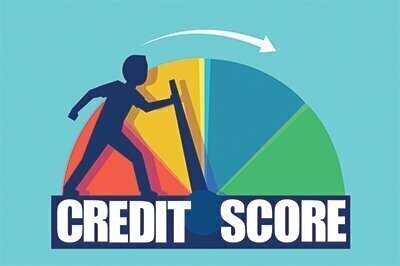Last updated January 2020
Your credit score affects the interest rates you can get for loans, plastic, and mortgages—and even how much you’ll pay for auto and homeowners insurance. Although everyone wants to maximize their rating with financial institutions, there’s no quick fix if you have a low score. Building or rebuilding a good credit score requires getting current on existing debt, making ongoing payments on time, paying down maxed-out credit cards, and not getting over your head in new debt.
Experian, one of the Big Three keepers of our credit files (along with Equifax and TransUnion), now pushes a program called “Experian Boost” that promises to “instantly raise your FICO score.” Signing up involves handing over to Experian your bank account info, which it uses to pluck out your phone and utility account payment histories. Experian then evaluates your payment records with these types of services and adds its conclusions to your credit score, which it shows you for free. “People who enroll in Boost see an average 10-point increase” in their FICO 8 Score, says Rod Griffin, Experian’s director of consumer education and awareness.
 Experian says Boost is especially helpful to consumers with “thin files”—those with little or no existing credit accounts credit bureaus can see. Boost in effect offers to help them demonstrate creditworthiness by proving they pay bills on time. “For people with thin accounts, we see an average 19-point increase,” says Griffin.
Experian says Boost is especially helpful to consumers with “thin files”—those with little or no existing credit accounts credit bureaus can see. Boost in effect offers to help them demonstrate creditworthiness by proving they pay bills on time. “For people with thin accounts, we see an average 19-point increase,” says Griffin.
Of course, if you’re behind on your utility or cell phone payments, you might not get any help from Boost. But an interesting asterisk is that if your payment histories added by Boost would decrease your score, Experian allows you to hit the “undo” button to tell it to not include its new-found negative info.
Although there seems to be little to lose by signing up for Boost, our view is that most should skip it because a small score improvement from the program probably won’t be useful, for a few reasons:
- Boost can only affect your Experian credit report and score; your record and score from Equifax and TransUnion won’t change. Many lenders you’re looking to impress might not use Experian’s data.
- Your potentially juiced-up score also may not be seen by lenders that do actually access Experian’s files. That’s because Boost impacts only FICO 8 and 9 scores generated by Experian, but not FICO 2 and 3 scores, which are used for mortgage and car loans, and for conventional credit cards. Other users of FICO 8 and 9 scores, which Boost might help: issuers of less-desirable high-interest-rate store credit cards, student loans, and unsecured personal loans.
- Companies that do see your boosted score likely won’t care about such a small improvement. Lenders typically group scores into tiers and offer high interest rates to lower tiers and their best rates to the highest ones. Although there are no formal rules, in general scores below 620 are considered sub-prime, 620–679 are non-prime, 680–719 are near-prime, 720–779 are prime, and 780+ are super-prime. If you have a score of 630 and Boost gives you 10 or 20 more points, your spiffy new 640 or 650 will likely leave you in the same non-prime tier. Griffin says 24 percent of the people in the poor credit tier who use Boost move up to the next tier. However, he also says that folks with already strong scores probably won’t see much of a gain—maybe only three or four points—and thus have less of a chance to move from the 60-point-wide prime tier into super-prime.
Lastly, we have serious concerns about giving any company usernames and passwords to bank accounts, which is required to get Boost. In exchange for very little benefit, you are opening the door for Experian—whose clients include retailers, insurers, debt collectors, and behavioral marketing specialists—to build an enormous database with access to the most intimate recesses of your financial life.


